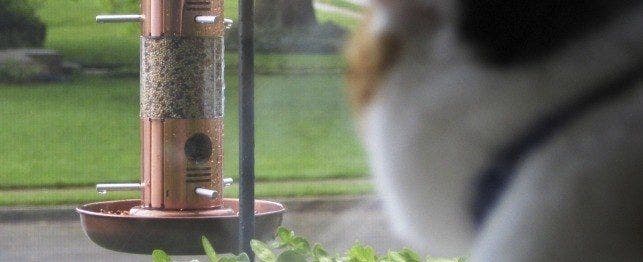
Selecting The Best Bird Feeder
Ah, a quiet, peaceful Sunday morning. You go outside with your morning coffee to listen to the chirping of the birds as they bustle around the feeders so carefully placed. The only problem is, they’re all next door at the neighbors, as if the avian world has boycotted your home!
What are they doing right to be getting such rave reviews in the language of birds? Are they using four-star seed for food or fancier bird feeders? Actually, it may be a lot more simple than that.
“One of the most common mistakes people make is to use the wrong type of seed in the feeder,” explains Sue Wells, executive director of the National Bird-Feeding Society. For instance, a tubular feeder may have holes designed for a type of seed called “niger,” which goldfinches feed on. But many people mistakenly fill the feeder with sunflower seeds, which are 5 to 6 times larger. Simply, the holes are too small for the seeds.
Picking the right bird feeder starts with learning what birds are in your backyard, and what sort of birds you want to attract. Although it sounds easy on the surface, Wells says backyard bird feeding is an art unto itself.
“Birds are like people,” Wells says. “They have a preference of where they want to eat.”
There are many kinds of bird feeders to fit different situations and types of birds. Some are “ground feeders,” for birds that prefer to eat from ground level. Others are higher, but provide a stable platform to allow a bird to stand on both feet while eating. Still other feeders allow birds to cling to the sides or to perch.
Then you have to consider your environment. Do you have a lot of squirrels or raccoons in your area? Both are the bane of outdoor bird feeders. Bird feeder manufacturers have come up with plenty of ingenious devices to foil unwanted animals.
Weighted, all-steel feeders, cage-within-cage feeders, stovepipe baffles are all weapons in your arsenal. “There are enough varieties to solve every problem,” Wells asserts.
It’s important to decide the size of bird you want to attract, because sometimes they chase away smaller birds. Birds of different species usually get along, Wells says, but some may be more aggressive than others. Blue jays and starlings, for instance, may shoulder out goldfinches from the feeder. Some cages offer shortened perches fitted with a saucer to collect spillage.
For the beginner, Wells suggests picking a hopper-style feeder in the shape of a house. As one seed is taken, another will fall down. If you use sunflower seeds, pick “black-oil” seeds. They contain the highest amount of oil.
Tidbits for the Backyard Hobbyist
Here are some tips to make your backyard feeder the crème de la crème of aviary cuisine. You can learn more about the National Bird-Feeding Society by visiting their Web site at www.birdfeeding.org:
- It is not necessary to keep the feeders filled 24 hours a day. Refill them early in the morning and in the evening, which is when birds tend to feed.
- In the evening, only fill the feeder with as much seed as the birds eat; otherwise, leftovers may attract squirrels and raccoons.
- Move the feeder when the ground underneath is covered with seed hulls and droppings. The area underneath should be cleaned.
- Try to keep feeders away from areas where cats may lurk. Even if the feeder is kept out of reach from cats, their presence will scare away birds.
- In fact, keep feeders away from bushes and as much in the open areas as possible. In trees, keep the feeders toward the outer ends of the branches.
- It is just as important to offer water as well as seeds to birds. They’ll even get in the birdbaths and splash around, which is fun to watch.